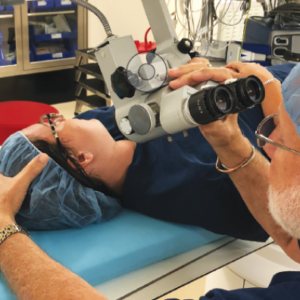Author: Dr. J. William Parker Jr.
Source: https://theforumnews.com/article-3160-tubes-tubes-tubes_.html
A course of action for ear infections Why tubes in my kid’s ears? Well, for starters, antibiotics and other methods have failed to resolve the fluid behind the child’s eardrum. Therefore, most pediatricians are going to throw in the towel after three to four rounds of antibiotics, while your child is still sick with fever and pain, having trouble hearing, and you aren’t getting any sleep. So, how do you know when your child needs tubes? Nearly 500,000 sets of tubes are placed each year by ear, nose and throat specialists like me, for the above reasons. You may ask, why so many operations? Factors could include your child’s exposure to illnesses in a daycare setting, exposure to tobacco smoke, or even just nose, allergies, big tonsils and adenoids issues.

So, what’s the deal? The answer is the Eustachian tube; you know, that “thing” that pops when you’re on an airplane. For the above reasons, along with the anatomy of a little child’s Eustachian tube, it gets blocked from a swollen, infected, gross nose. It is the nose that causes the Eustachian tube not to work. What does the pediatrician do then? They prescribe antihistamines, decongestants, and antibiotics to the patient. If the fluid goes away, the problem is resolved, but sometimes the fluid can persist. After several rounds of the regimen, something else must be done! Thus, it’s time for tubes in your child’s ears. The fluid in your child’s ear is behind the eardrum. This fluid is removed microsurgically in the operating room with your child asleep. And, yes, anesthesia is safe, even for little children. The surgery begins in day surgery, where we sedate your child with oral medicine, no shot. I carry my babies to the operating room, where they go to sleep in my lap. If an IV is needed, it is placed after they are asleep. Then, using the operating microscope, a small 1/8 of an inch cut is made, the fluid is removed, and a tube inserted. So, what does the tube do? The tube lets air in and out of the middle ear. After placement, hearing returns. Fever, pain and late nights are relieved. My tubes usually stay in for one or two years, then they come out on their own, and the hole closes. So, if you’re tired of your child being in pain from an ear infection, ask your pediatrician about tubes. If you already have a regular ENT, great! If you do not, your pediatrician can refer you to one of us in Shreveport or Bossier. Remember, it is a safe procedure for your baby. Dr. J. William Parker Jr. is an ear, nose & throat / facial plastic and reconstructive surgery physician at Highland Clinic. He treats both children and adults and accepts most insurance plans. Dr. Parker specializes in disease and surgery in the area of the face, throat, sinuses and neck, with a specialty in chronic sinus patients. He now offers a new service known as Balloon Sinus Dilation. He is accepting new patients and can be reached at (318) 798-4565, located at 1455 East Bert Kouns Industrial Loop, Suite 207, Shreveport, LA 71105.
Visit https://www.parkersinuscenter.com for more information.


